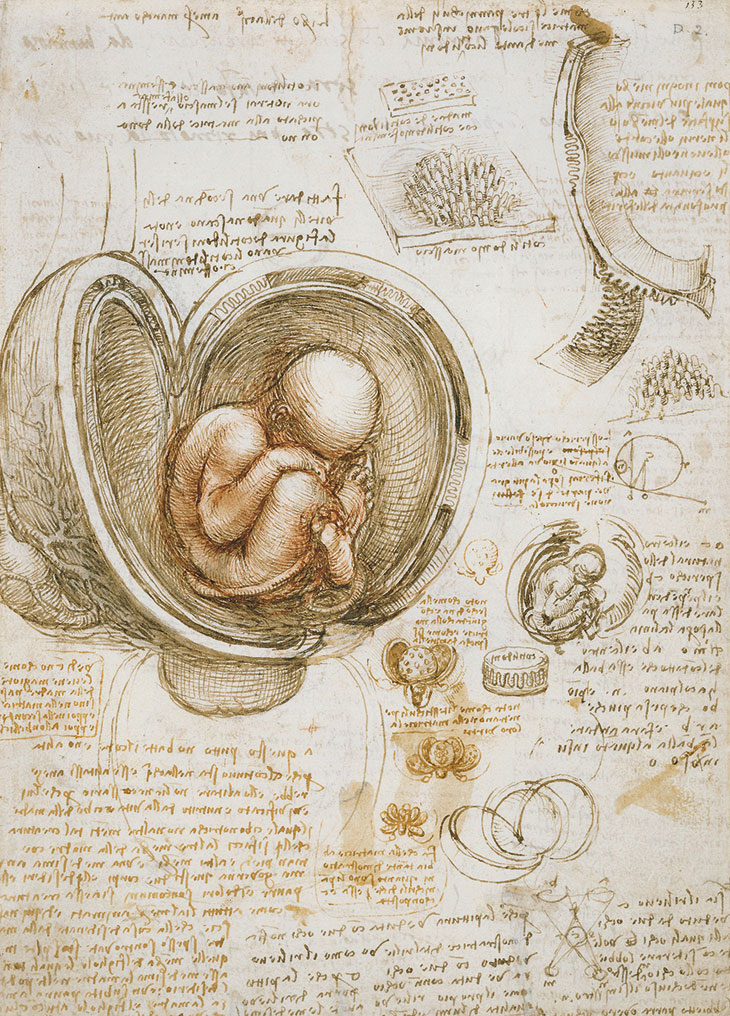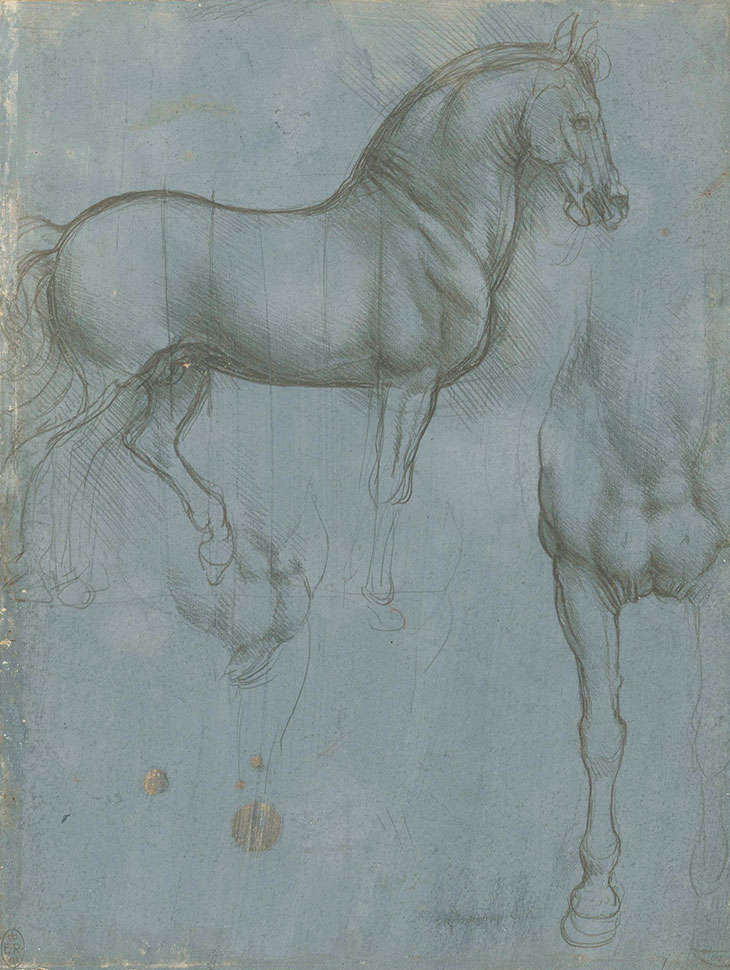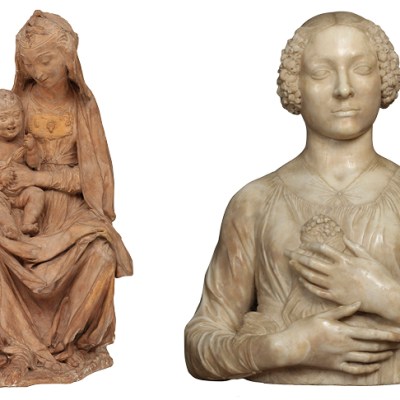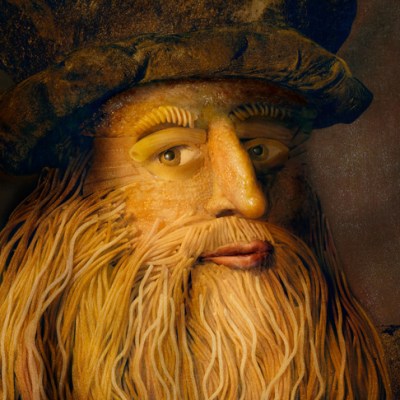Leonardo da Vinci (1452–1519) is often considered, because of the universality of his interests, a man for all ages. He is, however, a figure perhaps especially relevant now, 500 years after his death. On the one hand, he studied and celebrated the beauty and underlying connections between many aspects of the natural world, immersing himself in its precious and ungraspable complexity. On the other, he was fascinated by the challenge of mapping and controlling nature for human benefit and had no compunction about designing, for example, alarming, destructive weapons, or about depicting cataclysms.
A man tricked by gypsies (c. 1493), Leonardo da Vinci. Photo: Royal Collection Trust; © Her Majesty Queen Elizabeth II 2019

These projects, alongside numerous others, are revealed through his drawings and written observations, which provide rich insights into a searching and restless mind. Leonardo enjoyed an exalted contemporary reputation but much of the evidence for the full breadth and sophistication of his investigations remained largely unexplored until the 19th century, since his sketches and notebooks were little known. The 550 or so sheets in the Royal Collection were probably acquired during the reign of Charles II, having passed through the collections of Leonardo’s pupil Francesco Melzi, the sculptor Pompeo Leoni and Thomas Howard, Earl of Arundel. Kenneth Clark began to study them systematically in the 1930s; their variety, chronological range and fine condition illustrate in spectacular fashion many of Leonardo’s achievements and observations.
Beautifully installed and crisply interpreted, the 200-odd works in this exhibition are broadly arranged to follow the course of Leonardo’s career, with thematic groupings integrated. So we travel with the artist from Florence to Milan and on to Rome, and then north again via Tuscany and Lombardy to France, where he spent the last years of his life in the service of Francis I. His life as seen through the drawings appears to be an unrelenting quest for knowledge as he lurched from one project to another, often leaving questions and commissions unresolved. Alongside this quest, however, was a more practical, opportunistic trajectory since, like all artists of the age, Leonardo had to pursue patronage, which meant moving from court to court in a Europe riven by wars and shifting political alliances.
The fetus in the womb (c. 1511), Leonardo da Vinci. Photo: Royal Collection Trust; © Her Majesty Queen Elizabeth II 2019

Amid this whirlwind of activity, key painting or sculptural projects provide fixed points: for example, studies relating to the unrealised bronze Sforza equestrian monument or The Last Supper are grouped together. Subjects that fascinated Leonardo are also marshalled into discrete sections – like the beguiling caricatures or engineering, anatomical, botanical, cartographical and water studies. This all makes for a comprehensible presentation, but is to some extent an exercise in tidying up, given the endless overlaps and cross references between and beneath his projects. His breadth of outlook is an invaluable reminder that the distinctions we draw between art and science would have been far less clearly or narrowly articulated in the 15th and 16th centuries.
Similarly, the divisions become fascinatingly blurred between what might now be categorised rather prosaically as fact and fantasy. Leonardo sought to record experience accurately – defining with uncanny precision and elegance the musculature of a horse or a man, or the structure of a leaf or rock formation. But he was also capable of idealising with exquisite grace the head of St Anne or Leda or a male youth. And he could let his imagination take flight when, for example, a political allegory required a crowned eagle bestriding the globe or a court entertainment needed a dragon costume.
Studies of a horse (c. 1490), Leonardo da Vinci. Photo: Royal Collection Trust; © Her Majesty Queen Elizabeth II 2019

Across all these themes a ravishing range of techniques and materials was employed; the precision required by metalpoint proved especially appropriate for some of his most incisive human or animal observations, while iron gall ink and red and black chalks allowed an exploratory freedom fitting for compositional trials, fictive works or capturing movement – a rearing horse or a river in full spate. But, because this is Leonardo, such precepts could be and were broken; he overturned so many conventions and sometimes mixed his media to wonderful effect. The appeal of the minutiae of his technique and choice of materials is laid out in Alan Donnithorne’s book, which complements the exhibition and is undoubtedly one of the most attractive publications to emerge in this special Leonardo year. It makes clear that although there were stylistic shifts over the course of his career, there was no lessening of his prodigious skills and experimentation as he aged.
A deluge (c. 1517–18), Leonardo da Vinci. Photo: Royal Collection Trust; © Her Majesty Queen Elizabeth II 2019

The late drawings of deluges, dating from his time at Amboise in the Loire, where he died in 1519, remain an enigma. Chiefly executed in black chalk on rough ‘oatmeal’ paper, they seem to elide actual torrents witnessed with apocalyptic dreams. Could they be a vision of the biblical flood, or are we given here a glimpse of doomsday? Mountains being overwhelmed by water provide a fascinating counterpoint to Leonardo’s earlier observations about seashells being found on top of the highest peaks, which could only mean one thing – that in ancient times the world and its oceans had looked quite different. As so many of his drawings seem clearly purposeful, it is troubling to find such a powerful sequence from the end of Leonardo’s life not satisfactorily explained.
It would be tempting but wrong to view Leonardo’s unrelenting curiosity and invention simplistically, as marking him as the proponent of some sort of modern, secular world view. His faith may have been unconventional, but all the empiricism he displayed through images and words was sealed in a Christian envelope. Leonardo’s will makes clear that he wanted to commend his soul to Paradise. Arguably, he got closer than most to determining what Paradise might look like, by finding mesmeric beauty during his earth-bound researches and committing it to paper in miraculous ways.
‘Leonardo da Vinci: A Life in Drawing’ is at the Queen’s Gallery, London, until 13 October.
From the July/August 2019 issue of Apollo. Preview and subscribe here.



